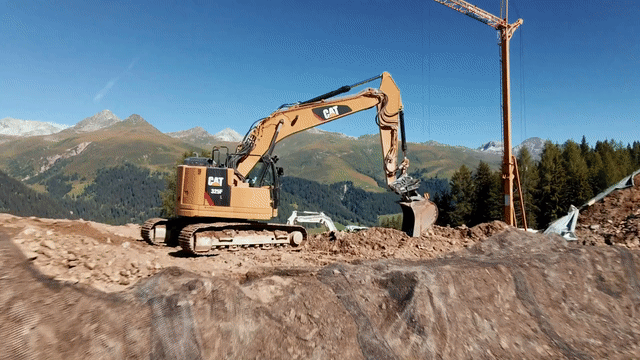Heavy construction draws on digital capabilities to meet sustainability demands
Digitalisation underpins the future sustainability of the construction industry. Today’s technology is ready for companies to build their own digital foundations for efficiency gains and reduced environmental impact.

Author: Christian Luttenberger
Traditional processes in the global heavy construction industry have similarities to super tankers: To change direction, you need foresight, planning and patience. However, the mantra “this is how we’ve always done it” is giving way to new technologies, new practices and new people. The next decade, indications in the industry promises to deliver a paradigm shift in priorities and, indeed, the way things are done.
The industry is slowly beginning to adopt new digitally connected technology, but it’s years behind the curve. One only has to take a look at mining to see how a similar heavyweight industry is already reaping significant productivity gains from digitalisation, remote capabilities, and data-driven operations. (Granted: the mining industry’s standardized processes may lend themselves more easily to digitisation.) On the flip side, the heavy construction industry can leverage recent advances in digitalisation and travel a long way up the technological scale in a short period of time.
Technology can play a significant role in optimising resource utilisation on the jobsite, but it is important to choose the right technology partner. A recent Dodge study shown that: 54% of contractors say their field staff is lacking on training how to gather data, 49% say data gathering is time-consuming or too difficult and 31% have concerns about productivity impacts. As such it is important to choose the right digital solutions, allowing contractors to get job done efficiently, effectively and dirtsimple.
Crucial metrics for any heavy construction project are accuracy (as in, built to specification), time, budget and safety. Tag sustainability on that list — as pressure to reduce environmental impact will increase.
Luckily, these metrics are aligned: Maintaining tight control over your processes and closely monitoring physical operations leads to greater efficiency and tighter cost control. Greater efficiency also means less waste and fewer emissions. Hexagon’s Heavy Construction solutions offer several tools, including the Leica iXE3 machine control solution, that increase the productivity of an excavator by automating vital functions. For instance, using the semi-automatic excavator functionality helps perform complex excavation tasks such as slope creation and trenching faster and more accurately, thereby saving costs, time and fuel.
Another digital solution our customers value is Leica ConX. It facilitates a remote, cloud connection between crews and machines on and off-site for data and design exchange, productivity analysis and reporting of project progress.

Better planning leads to success
From a project perspective, if you have a more concise picture of your site you can more accurately prioritise and streamline assets, plan work more precisely and reduce site movement by digging, moving and replacing only what needs to be dug, moved and replaced.
“Our turnover has increased by 25%, plant onsite has reduced by 66% and labour by 45% to do the same work as before using machine control,” says Richard Baker, groundwork contractor. Watch the full interview with Baker and learn how his company benefited investing in technology.
Utilising digital technologies has follow-on effects too. Better planning and less rework mean fewer or smaller vehicles, which reduces the need for people onsite and lowers a project’s emissions. In summary: Quicker completion, less pollution, lower costs and greater safety.
Creating point-cloud-generated digital twins will unlock the potential for far greater use of digitisation, making processes more accurate, more sustainable, safer and less susceptible to human error. Semi-automated processes already exist, but autonomous solutions face legislative hurdles and, as a result, is further down the road. It will likely start with slower-moving machines, such as pavers, and then migrate to other parts of the project as the industry and operators become more confident in the technology.

Implementing sustainable practices
To help achieve climate goals, governments increasingly use environmentally responsible procurement as an instrument to influence the sustainability of contractors. In fact, sustainability aspects are no longer nice to have, but become a core part of tenders.
In fact, sustainability aspects are no longer nice to have, but become a core part of tenders. Being able to explain your sustainability practices and demonstrating your ability to reduce your impact on the environment will likely be crucial to business success. Some countries already introduced regulations demanding boosts in plant and machine efficiencies.
Across Hexagon, we have the advantage to combine domain industry knowledge, experts, research and development from various divisions to offer “Dirt Simple Solutions”. Enabling better planning, efficient execution, precise machine control systems, and automated workflows, our customers can benefit from easy-to-use technologies. And this, we back up by comprehensive solution portfolios, service and support.




